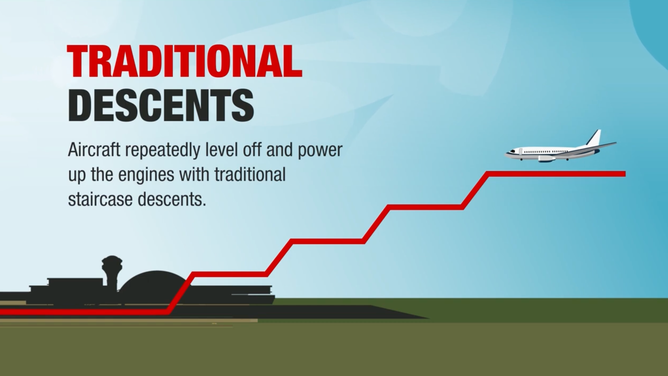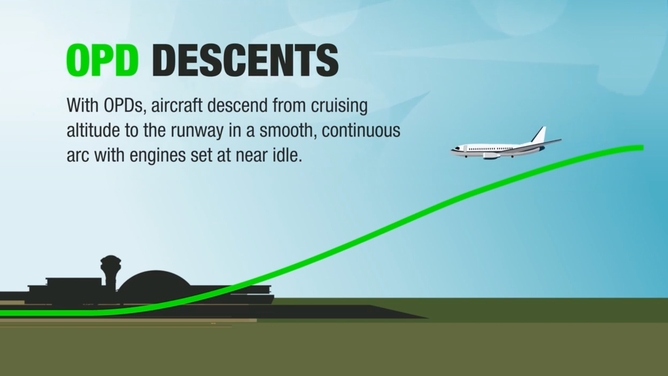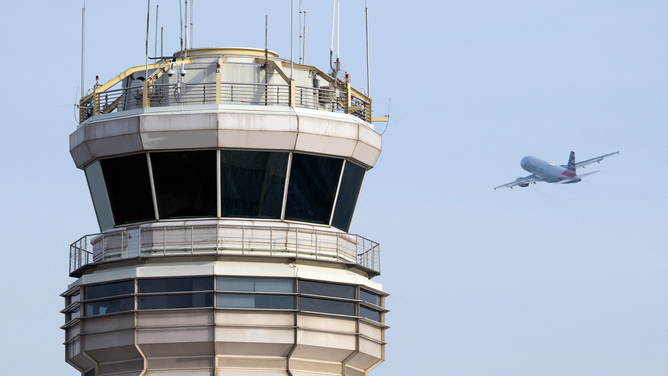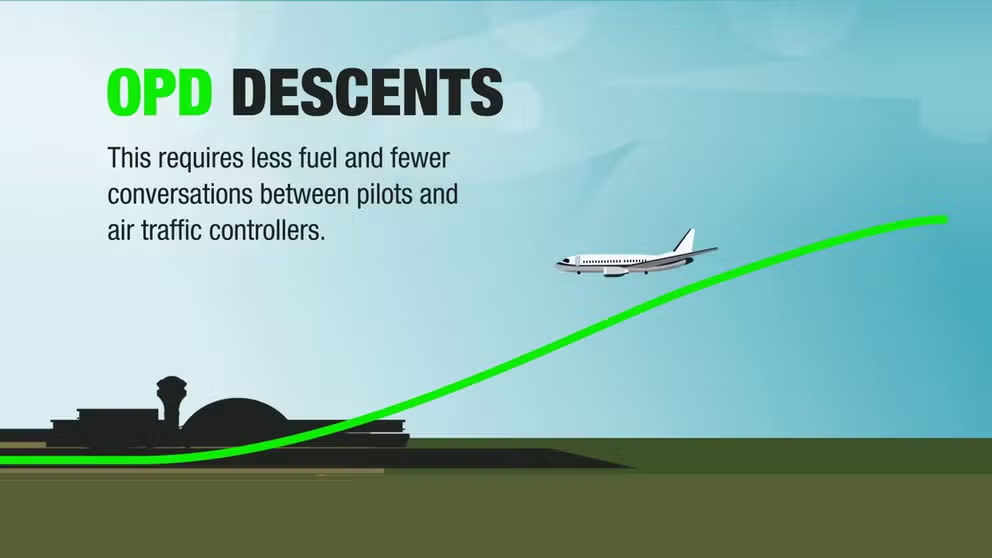FAA implements fuel-saving changes to planes headed to these select airports
The changes are expected to save the airline industry more than 90,000 gallons of fuel annually, according to the FAA. Find out if the changes will impact your next trip.
FAA implements changes to the way airplanes make their descent
New descent procedures called Optimized Profile Descents were put in place at a number of airports across the country. According to the FAA, these changes will save millions of gallons of fuel and reduce CO2 and other emissions by hundreds of thousands of tons. (Courtesy: Federal Aviation Administration)
The FAA implemented changes to the way airplanes make their descent as they approach a number of U.S. airports.
Called Optimized Profile Descents, or OPDs, the changes were implemented in 2022 and now affect planes heading to Kansas City, Omaha, Reno, Orlando and six south Florida airports.
Here are the airports that will be affected by these OPDs, along with the ways the changes will impact passengers' flight experience.
What are the new Optimized Profile Descents?

Traditional descent path for an airplane.
(Federal Aviation Administration / FOX Weather)
The OPDs involve adjusting the way airplanes make their descent.
Originally, airplanes would take a "stair-step" approach, which involved a plane approaching its destination by decreasing its altitude, leveling off and then repeating this process until the airplane lands.
HERE'S WHAT CAUSES TURBULENCE AND WHY YOU SHOULDN'T BE AFRAID OF IT
With the new OPDs, an airplane would descend by following a continuous arc down to the tarmac.

New OPD descent path for an airplane.
(Federal Aviation Administration / FOX Weather)
This new type of descent would require less communication between pilots and air traffic controllers, whereas traditional descents require communication at each "step" of the stair-step procedure.
Additionally, an OPD descent would set the airplane engines at near idle. In contrast, the traditional stair-step approach requires the aircraft to level off and power up the engines repeatedly.
What are the benefits of Optimized Profile Descents?
The FAA noted other benefits of the OPDs, such as a smoother ride for passengers and less noise at ground level due to less engine revving.

An American Airlines Airbus A319 airplane takes off past an air traffic control tower.
(SAUL LOEB/AFP / Getty Images)
The changes are also expected to save the airline industry more than 90,000 gallons of fuel annually. According to the FAA, this is due to the OPDs involving the aircraft descending at near idle, making the new descents more fuel efficient.
The FAA noted that the changes are estimated to reduce greenhouse gas emissions by 27,000 tons annually.
DEVELOPMENT OF A FUEL-EFFICIENT JETLINER COULD SIGNIFICANTLY REDUCE EMISSIONS
According to the FAA, these changes brought about by the new OPDs are equivalent to fuel used by 62 Boeing 737 flights between New York and Cleveland.
Which airports are affected by Optimized Profile Descents?
How pilots train for turbulence to keep you safe on your flight
Have you ever wondered what causes turbulence on your flight or how the pilots keep you safe? FOX Weather Meteorologist Jason Frazer went to the United Airlines Training Facility to find out.
The airports affected by these recent changes include:
- Florida: Boca Raton Airport, Fort Lauderdale Executive Airport, North Palm Beach County General Aviation Airport, Orlando International Airport, Palm Beach County Park Airport, Palm Beach International Airport, Pompano Beach Airpark.
- Missouri: Kansas City International Airport.
- Nebraska: Eppley Air Field, Offutt Air Force Base.
- Nevada: Reno/Tahoe International Airport.
"We are investing across the entire system to provide passengers with the best travel experience," said Billy Nolen, Acting FAA Administrator.
HERE ARE THE BEST TRAVEL TIPS FROM AN AIRLINE PILOT
"The era of choppy descents is coming to an end, providing a smoother landing and saving fuel in the process," he added.

